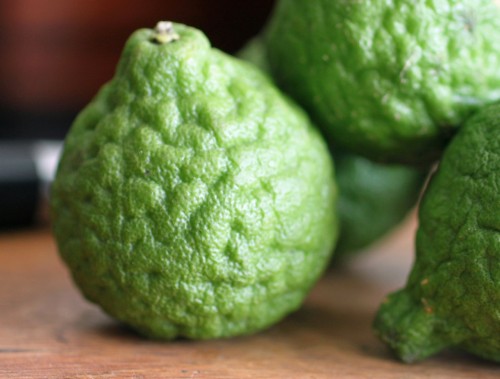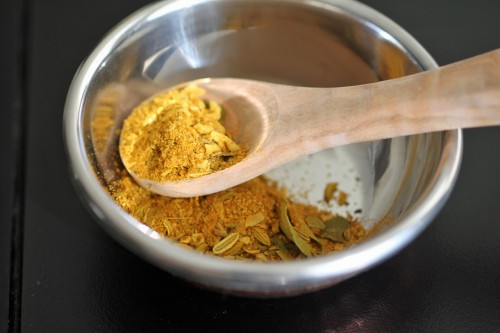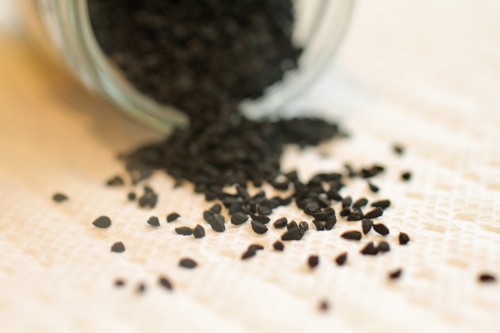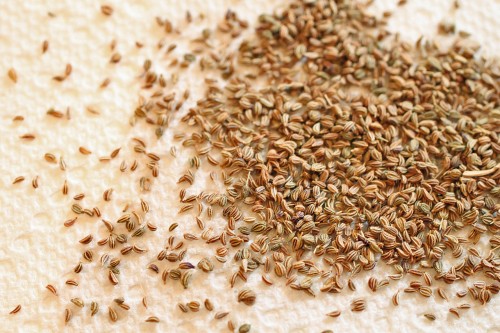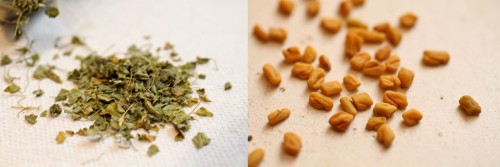Kaffir Lime
A few weeks ago, I mentioned how taken aback I was to find kaffir limes while food shopping at a non-ethnic grocer. All citrus originated in South and Southeast Asia and was introduced to Europe during the Middle Ages. It’s interesting to think how some forms of it, like kaffir limes, are just getting recognized in the West. I asked a few friends who said they had no idea what a kaffir lime looked, tasted, smelled like, so I thought I would talk a little more about them.
Many know about kaffir lime leaves, which are used throughout Thai, Laotian, Cambodian, Malay, Indonesian and other Southeast Asian cooking. They are so unusual, with their double-leaf structure, and citrus aroma. But I think the limes themselves are equally interesting and get much less play because they aren’t as readily available or people just don’t know how to use them.
Kaffir limes are dwarf-like, a verdant green, with a rough, wrinkled, knobbly texture. Not so pretty. There isn’t a ton of flesh or juice to them really, and neither is really used in cooking. It’s their rind that is prized because it’s packed with aromatic oils. A little goes a long way.
The zest of kaffir lime is a key ingredient in many Southeast Asian curry pastes. I love using it because it’s slightly lemon-floral-grassy notes work well in place of regular lime zest, and it’s one of those sweet or savoury ingredients. It can elevate a fruit salad for breakfast to something spectacular, blended with fleur de sel (kaffir lime salt!) it’s a fantastic finish to a nicely seared piece of fish, and I don’t even want to get into the mojito possibilities…



